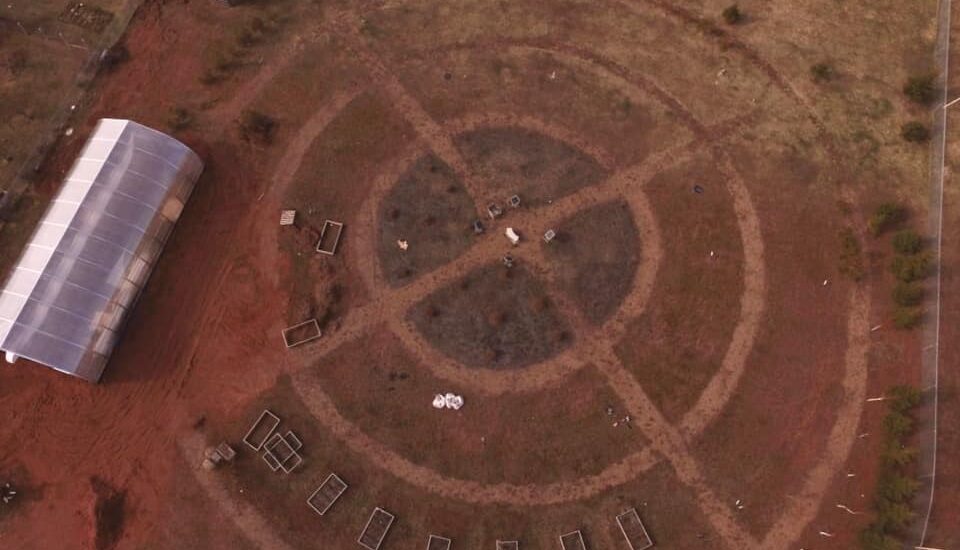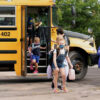The Digital Mi’kmaq Community Garden and Food Security Project sets out to improve the quality and accessibility of healthy, locally grown foods in Mi’kmaq communities. As such, the project works toward supporting the expansion of self-sovereignty through the creation of jobs, educational programming and opportunities for community members to actively engage in all aspects of the food system.
At this time the project is involved in building permanent community-based greenhouses, field houses and outdoor gardens in five partner First Nation communities across Mi’kma’ki: Potlotek, Lennox Island, Eel River Bar, Annapolis Valley and Miawpukek.
In this interview Paul Wartman speaks with Chris Googoo, a member of the We’koqma’q First Nation and COO of Digital Mi’kmaq, which is sponsoring the initiative, and Dawn Matheson, the project coordinator for the food security program.

Paul: What is the impetus for the food security program?
Chris: It’s definitely one that as an Indigenous community we’ve always thought of–food security, food sovereignty. Recently, it’s purpose is to reduce the rise in diabetes rates, the more than normal heart and liver disease, and higher rates of cancer. It’s been to help promote healthy diets. What has accelerated this of course has been Covid. We’re realizing that the pandemic has highlighted our need to create healthy communities because Covid just rips through communities with these higher rates of issues, which Indigenous communities are at the higher end, making us vulnerable as nations.
When you look at communities locking down during Covid, you had communities literally lock themselves out from the rest of society. Eskasoni, Pictou Landing, those communities that were a little more isolated, basically closed their doors. So, the communities without grocery stores, there’s no way to get healthy food, so people had to leave their communities to go to grocery stores which created potential exposures to Covid for these more vulnerable communities. This highlighted the need for food security in these communities.
We were fortunate to receive funding from the United Way. Our strategy was to pick 5 communities, each of which is a pilot for replication. Each community is different in their demographics, location, ecosystems, and support systems, so that we could create different business models to replicate in diverse communities.
Paul: What does food sovereignty mean to you and what does it look like?
Chris: Being a 35 year old organization, our inception is about sovereignty. At the beginning we had these eras of centralization, such as residential schools and the 60s scoop era. In the early 80s, communities gathered and stated that they want to be sovereign, they want to self-determine. This led to the development of Mi’kmaq Family Services Division to reduce the adopting out of our kids. Also, if we wanted to be an independent nation we needed our own economic and training development arm, which led to the creation of Ulnooweg. So in terms of sovereignty, food is just another part of it. We also deal in governance, health, tribal police.

Food sovereignty is an opportunity to affect the community on multiple levels. If we want entrepreneurs in our communities we need them to be healthy. We have higher rates of mental illness in our communities and we know that healthy diets lead to better mental health. In terms of education, we can create the space for communities to have living laboratories to create learning modules, test them, and then bring them into the public education systems to teach about agriculture. It also provides us a safe space where our elders, who have been impacted by centralization and residential schools, can come into the green houses to mingle with educators and school children, and bring Indigenous knowledge and their stories to life.
These stories tell the children and the educators that we’ve always had agriculture. The public education system and history hasn’t told us that. We’ve always been told that we’ve been under the Indian Act, we’ve been given government handouts throughout history. We know that hasn’t always been the case–we’ve invented agriculture in many ways. We have to bring those back so that the children are empowered and in the whole process we are reclaiming our sovereignty as a nation. This leads to our continuing narrative of our traditional territories being what they are–beyond Atlantic Canada including the US. These narratives empower children in the whole reclamation process and along the way we build relationships with non-Indigenous peoples and go back to why the Peace and Friendship Treaties were established–to create peace and friendship. That’s the goal. When we look at the system now there’s a lot of systemic barriers in place, so when we have children growing up and they enter spaces of education, employment and entrepreneurship, we have people in those spaces who are now accepting of Indigenous peoples because we have re-built these relationships.
Paul: In Digital Mi’kmaq’s programs and beyond the term Etuaptmumk is used. Can you speak more to Etuaptmumk (Two-Eyed Seeing)?
Dawn: I’m a non-native, I identify as white. My other half is Indigenous, my children are Indigenous, and I’ve lived on the reserve for 24 years. Two-eyed seeing is something I’m learning about, so I ask questions. The late Mi’kmaw Elder Dr. Merdena Marshall explained it to me and how I understand it is that we need both eyes to see a clearer picture of how things are. We need the Indigenous worldview and the non-Indingeous view to get the whole picture and take the best out of both. Me being non-Indigenous, this is how I understand it now.
Chris: When I talk about two-eyed seeing, and as Dawn mentioned seeing with only one eye, I use the term a’qatapit which is used now to mean drunk. When you’re not seeing with two eyes your vision is impaired. With food security, two-eyed seeing brings Indigenous knowledge into parallel with non-Indigenous sciences of agriculture.
Paul: What has been the response of some of the communities you have been working with?
Dawn: Due to Covid restrictions we are behind where we could be, but the five communities that we’re working with are excited and it is contagious! I’ve had four additional communities reach out saying “How can we get involved?!”. During a highschool visit to one of the greenhouses, garden beds were being installed, beets and carrots were being planted, and the kids were excited by it. There were light bulbs going on! They were engaged with the hands-on work, and it was fun for them, especially with all the online work going on because of Covid.
Chris: We are growing the opportunities to include community hubs to, again, create safe spaces to bring in elders, bring in Indigenous chefs, teaching people how to cook. You know, people haven’t cooked kale before. We want to bring in the youth to learn these skills and flip those switches of learning.
Paul: What are the youth saying about these projects?
“It started as an interest in being involved in something outdoors. I always find being outside fun and this was something new that I wanted to try. When I learned a little about how the greenhouse works and what they’d be growing there I started to see how what I would learn in the greenhouse could also help me in classes. When I found out I could work there this summer, I applied because I wanted to get a job anyway and with this job I could work outside and keep learning about growing food. I also learned a lot about how to do a resume and apply for a real job through this experience.” – Devon, from Potlotek First Nations Community
You can learn more about the Digital Mi’maq’s Community Garden and Food Security project here https://www.digitalmikmaq.com/community-garden-project and follow along with their progress on Facebook: https://www.facebook.com/digitalMikmaq
Check out our new community calendar!
With a special thanks to our generous donors who make publication of the Nova Scotia Advocate possible.
Subscribe to the Nova Scotia Advocate weekly digest and never miss an article again. It’s free!



